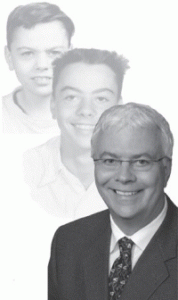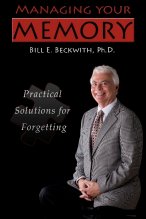Myths Surrounding Alzheimer’s
Alzheimer’s disease is a complicated condition that comes on very slowly over the course of many years. The first signs may be quite subtle. The course is irregular with periods of lucid thought interrupted by fluctuations in memory or thinking that are similar to the changes in memory efficiency that happen as a consequence of aging. This makes early detection of those who develop Alzheimer’s quite difficult and gives rise to a number of beliefs that lead to the attitude that there is nothing you can do.
“Aging is a disease.” Aging is not a disease state that needs treatment. Many age quite well and have productive fruitful lives into their 90s or even early 100s. Take for example my wife’s 96 year old aunt who still safely drives, lives alone and is still a whiz at playing cards or the judge who still works at age 102.
“Memory loss is a consequence of aging.” Aging does not lead to memory loss. Memory loss is a consequence of abnormal changes in brain structure, illness, and or accidents. Aging makes memory like other skills less efficient but if does not destroy memory.
“There is a medication on the horizon that will cure Alzheimer’s.” Indeed, despite the impressive advances in medicine, there are few real cures for diseases. We have come a long way in hygiene and immunizations that have allowed control of many diseases but these advances are not cures. For example, we can better manage diabetes with the discovery of insulin, but being able to replace insulin does not cure diabetes. The failure of Lily’s medication should give us pause to consider that there will not be a simple cure for Alzheimer’s.
“The objective of evaluation is to predict Alzheimer’s disease.” We still don’t know what causes Alzheimer’s. Abnormal proteins called amyloids are associated with the classical plaques that define Alzheimer’s but we still have not resolved whether Alzheimer’s causes the plaques or the plaques cause Alzheimer’s. Furthermore, the almost single minded focus on plaques ignores the other hallmark characteristic of Alzheimer’s called tangles. It’s is clear that the most common early sign of Alzheimer’s is changes in short-term memory. We have well developed and standardized ways to measure memory but instead ignore these advancements and continue to seek out “biological markers” for Alzheimer’s. The objective during evaluation should be to focus on memory and cognitive skills. If we wait for a medical diagnosis of Alzheimer’s we lose years of valuable time that could be productively spent working around progressive changes in memory.
“There is no treatment for Alzheimer’s.” The treatment for early stage Alzheimer’s requires focusing on your short-term memory and making a proactive plan to manage if your short-term memory declines in the future. There are three components to treatment. First, use short-term memory aids liberally. Second, learn memory skills that you might need in the future and implement them before you need them. Third, make a plan for how to stay engaged in the things you love to do.




